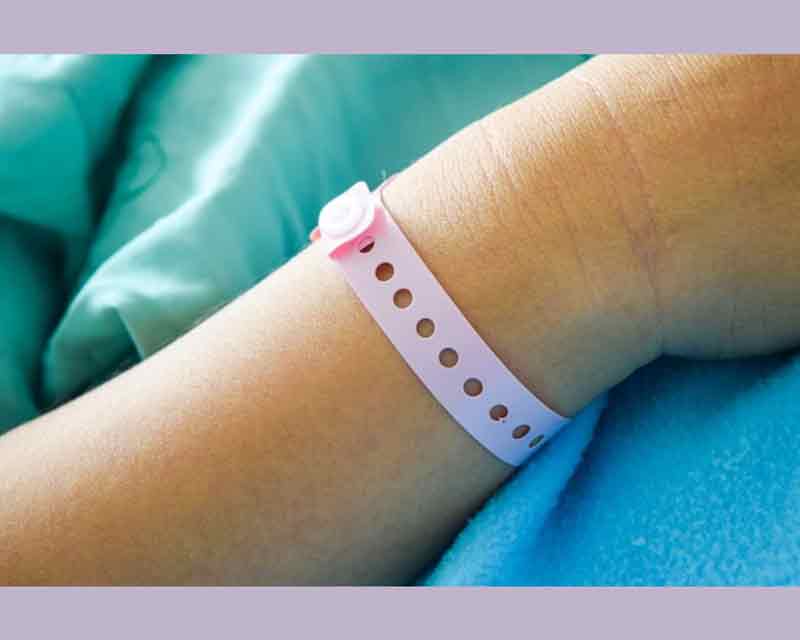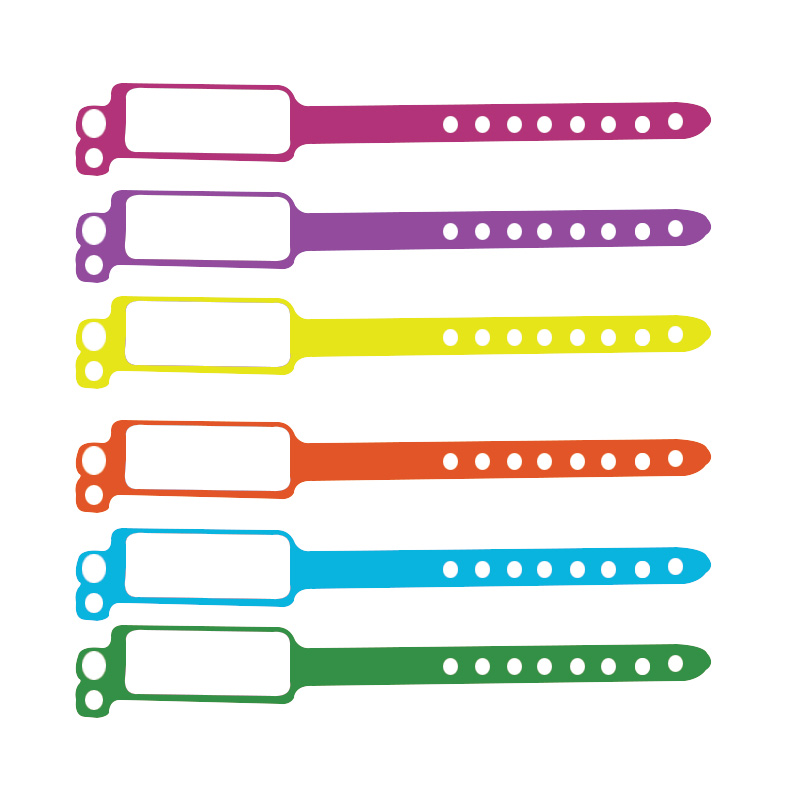Best Practices for Implementing a Patient Identification Band System in Your Clinic
Best Practices for Implementing a Patient Identification Band System in Your Clinic
Blog Article
A Comprehensive Guide to Patient Identification Band as a Vital Medical Supply
In the vast landscape of healthcare, Patient Identification bands have actually become a crucial tool (patient identification band). These bands, overflowing with important information, act as the initial line of protection against medical mistakes and make sure smooth Patient care. As we start to discover these medical materials detailed, we uncover the intricacies of their layout, use, and influence on Patient safety, while hinting at the promise they hold for future clinical practices
The Role of Patient Identification Bands in Healthcare
The relevance of Patient Identification bands in healthcare can not be overemphasized. These easy wristbands work as the main approach of guaranteeing Patient identification, decreasing the danger of clinical errors and boosting total Patient security. They are a crucial device in confirming a patient's identification before administering therapies, medicines, or performing treatments. They are usually color-coded to represent various health conditions, allergies, or risk variables, enabling quick visual Identification by health care experts. In the fast-paced, high-pressure globe of healthcare, where human lives go to risk, the benefits of such a straightforward yet effective device are important. Patient Identification bands offer a system of equilibriums and checks, a fail-safe against potential mistakes, and a consistent pointer of the specific behind the treatment.
Decoding the Information on Patient Identification Bands
While they might appear easy at a glance, Patient Identification bands bring important information that can significantly impact the program of an individual's treatment. These bands generally display the Patient's name, day of birth, and an unique identifier, such as a medical record number. In addition, the barcode located on these bands can be scanned to access the Patient's electronic health record, supplying a riches of info to health care service providers.
Various Kinds Of Patient Identification Bands: A Closer Appearance
In the world of Patient Identification, there are several types of bands that serve distinct functions. Barcode Identification Bands, RFID Tag-based Bands, and Color-Coded Patient Bands are the primary groups - patient identification band. Each type provides special functions and benefits, which will be analyzed in the following areas
Barcode Identification Bands
Using a substantial enhancement in Patient safety and security, barcode Identification bands have come to be an essential instrument in the medical area. These bands store essential Patient information in a barcode layout that's swiftly easily accessible with a scan. This lowers the opportunity of human mistake in Patient Identification and data retrieval, which is crucial in clinical procedures. The barcode system makes information like Patient name, medical background, allergies, and recommended medicines conveniently available. This ensures correct and quick Patient Identification, particularly in emergency situation circumstances where every 2nd matters. Barcode Identification bands are likewise very easy to utilize, economical and durable, making them a vital part of modern-day healthcare. Notably, these bands have actually considerably minimized clinical errors and boosted Patient security.
RFID Tag-based Bands
One more cutting-edge method in Patient Identification is making use of RFID Tag-based bands. These bands make use of Superhigh frequency Identification (RFID) innovation to offer a secure form of Patient Identification. Unlike barcodes, RFID tags can save a lot more information and can be read without straight line of view. This indicates that health care specialists can access important Patient details, even if the band is obscured by clothes or bed linen. Moreover, RFID tags can be reprogrammed with upgraded details as required, boosting their capability. These bands can be much more expensive than various other types of Identification, and there are personal privacy worries connected with the use of RFID modern technology. Regardless of these difficulties, RFID tags provide substantial possibility for enhancing Patient security and efficiency in medical care.
Color-Coded Patient Bands
Color-coded Patient bands stand as a straightforward yet reliable device in Patient Identification. These bands, widespread in facilities and health centers, make use of various colors to indicate numerous Patient allergic reactions, risks from this source or problems, making certain instant recognition by medical care experts. Thus, the color-coded Patient band system is a crucial component of Patient security and reliable health care delivery.

Use of Patient Identification Bands: Treatments and Methods
In healthcare settings, the use of Patient Identification bands plays a pivotal duty in ensuring Patient safety and security and minimizing medical errors (patient identification band). These bands, usually made of long lasting, hypoallergenic material, are affixed to the Patient's wrist or ankle, presenting essential information such as name, date of birth, and a distinct identifier. In senior treatment, 2 bands might be utilized for people with mental deterioration to guarantee proper Identification.
The Influence of Identification Bands on Patient Safety
Identification bands play an essential duty in maintaining Patient safety and security in healthcare settings. Their usage can significantly reduce clinical mistakes by making certain that the appropriate Patient receives the appropriate treatment. Furthermore, these easy tools add to boosting the top quality of care by providing an additional i thought about this layer of confirmation to Patient identities.
Minimizing Clinical Mistakes
A staggering variety of medical errors, estimated to be in the thousands of thousands every year, can be mapped back to misidentification of clients. These mistakes lead not only to harm to the Patient however additionally cause pricey legal and reputational problems to the medical care establishment. Patient Identification bands have actually emerged as a vital device in substantially lowering these errors. They supply an easy, yet effective, approach of correctly determining individuals. Most importantly, these bands guarantee that every Patient is appropriately matched with their clinical documents, examinations, and treatments, consequently considerably minimizing the threat of medical mistakes. By guaranteeing precise Patient Identification, these bands add to improved Patient safety and security, building trust fund and self-confidence in the medical care system.
Ensuring Appropriate Therapy
Safeguarding Patient safety, Identification bands play an essential function in guaranteeing the correct management of therapies. These bands have crucial info such as the Patient's name, date of birth, and unique Identification number. In significance, Patient Identification bands offer as a crucial guard in the healthcare setting, considerably adding to Patient safety and security and making sure appropriate therapy.
)
Enhancing Top Quality Treatment
While they might show up irrelevant, patient Identification bands significantly enhance the quality of care given in medical care setups. They are a necessary device in making sure Patient safety due to their ability to give prompt accessibility to vital info. The adoption of Patient Identification bands is, therefore, a necessary action in all health care atmospheres.
Exploring the Future of Patient Identification Bands in Clinical Method

Final thought
Patient Identification bands play an essential duty in health care, ensuring exact Patient Identification and lowering medical mistakes. These important devices enhance safety and give immediate accessibility to crucial wellness data. The combination of biometric and digital modern technologies could additionally enhance Patient security, treatment quality, and personal privacy. As clinical practices continue to advance, Patient Identification bands will certainly remain a critical part of the health care system.
While they might appear simple at a glimpse, Patient Identification bands bring essential details that can greatly affect the program of a person's treatment.Color-coded Patient bands stand as a straightforward yet effective tool in Patient Identification.In medical care setups, the usage of Patient Identification bands plays a pivotal function in guaranteeing Patient safety and security and reducing clinical errors. In significance, Patient Identification bands serve as a vital secure in the medical care setup, substantially adding to Patient security and guaranteeing appropriate treatment.
Patient Identification bands play an indispensable role in medical care, making certain exact Patient Identification and reducing clinical you can look here mistakes.
Report this page